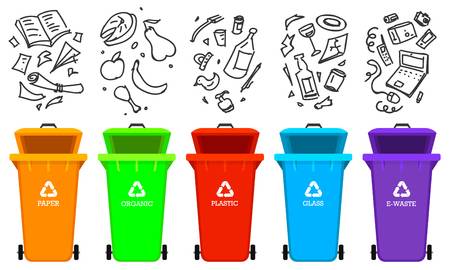News

Selection of waste – why is it necessary to select these types of waste?
03 April, 2019

The poor e-waste management means that communities and the environment will continue to pay the price of the toxic and inefficient design by electronics producers. For example, a large share ends up in the landfills where hazardous substances may leach, mercury may evaporate, and fires can set off, all of which leads to atmospheric pollution and generation of toxic dust residues.
Moreover, there are illicit ewaste flows from the rich countries to the developing countries. The full absence of or the poor enforcement of the legal regulations on environmental protection and workplace safety allow the unscrupulous waste traders to use the cheaper labour force costs in the developing countries, thereby maximizing their profit from recovery of substances.
Electronic and electric devices contain many toxic substances, which makes the e-waste toxic. More than 1,000 materials are used to manufacture our electronic gadgets and their components – chip conductors, motherboards, hard disks etc. Many of these are toxic, including PVC, heavy metals (such as lead, mercury, arsenic and cadmium), hexavalent chromium, plastics and gasses, which can all be harmful to the human health and the environment unless managed properly. Bromine fireproof materials, heavy metals (such as: lead, mercury, arsenic) and many more substances found in e-waste may seriously hard the human health and the environment, unless managed properly.
Landfills are the site where majority of e-waste ends up, and even the most modern among landfills cannot succeed in preventing the heavy metals and other toxic substances from leaching into the soil and waters. Moreover, electronics typically contains valuable and more and more rare substances. A single computer would normally contain iron, aluminum, copper, lead, nickel, tin, gold, silver, platinum and 37 Waste Management Training Programme, WasteEDU palladium. This is why e-waste recycling could be a potential source of income. The recovery of precious metals and other substances from electronics could also reduce the need to mine for new raw materials.
In order to be able to properly handle the e-waste and to protect ourselves from its adverse effects, first, it is necessary to properly select it, and then to properly dispose of it. WEEE must not end up mixed together with the municipal or other types of waste. With the proper selection of this waste type we contribute for its proper treatment and for the reduction of its impact on the environment


 |
|  |
| 


